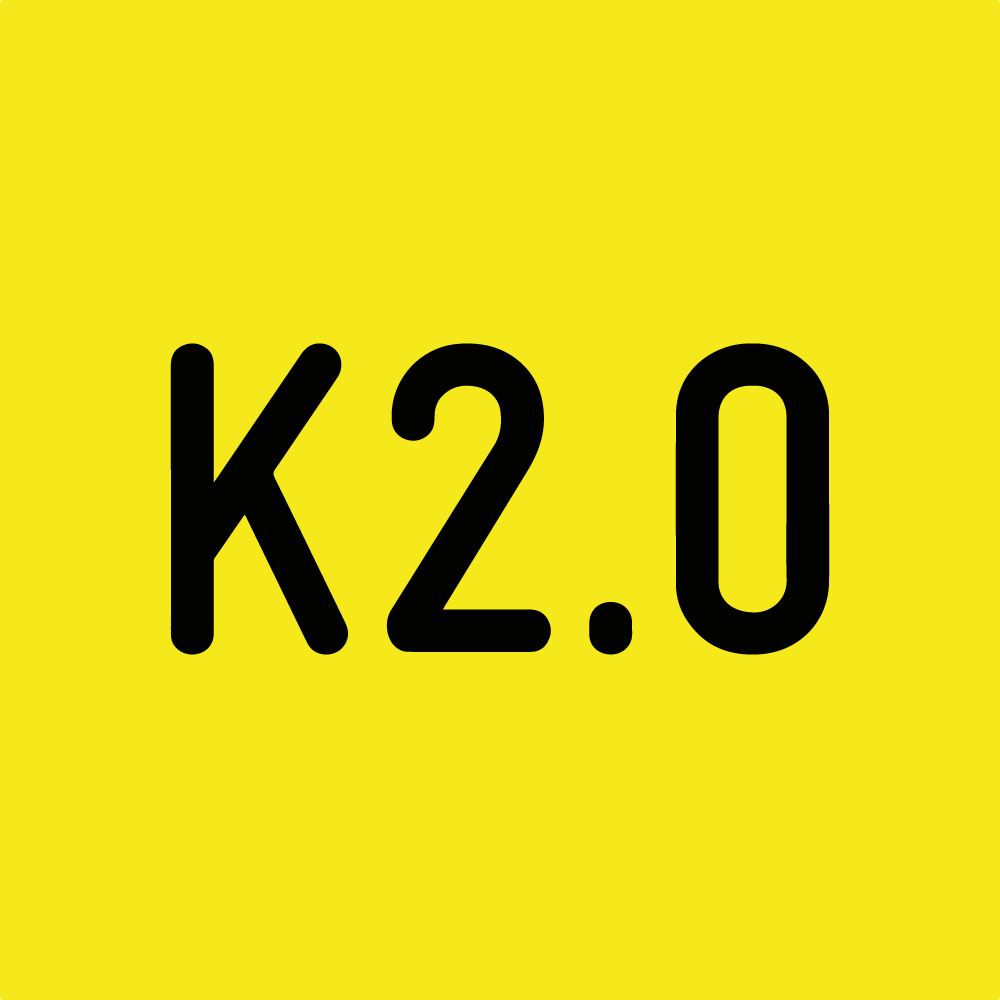For 17 years, Shpresa Behluli has worked as a midwife in the maternity ward where children in the Prizren region are born. At the same time, she is also the mother of two daughters aged 18 and four and has to take care of the latter.
When her elder daughter turned 14, Shpresa gave birth to her second daughter and took full advantage of her one-year maternity leave. Although the last three months are not financially covered, she continued to take care of the baby — the Law on Labour guarantees limited rights to fathers, with only two weeks of unpaid leave after the child is born, thereby reinforcing traditional roles.
Upon celebrating their daughter’s first birthday, Shpresa returned to work while her husband was employed in the private sector and had only Sundays off. Taking care of a little child turned into a constant struggle to find solutions.
They initially hired a babysitter, who would stay until they returned home from work. However, the modest amount of 120 euros per month that they paid to her became a burden on the family budget. This forced Shpresa to work the night shift at Prizren’s Regional Hospital, in order to take care of her daughter during the day. Meanwhile, she reduced the babysitter’s hours to work once every four days and paid her less. Sometimes, her husband would also work all weekend so that he could take care of the baby girl on Mondays.
“The whole family gets stuck.”
Shpresa Behluli, midwife and mum
Shpresa says that for a while, her mother also took on the role of babysitter. But when her mother died in 2018 from a severe illness, the only alternative remained her neighbor, who also had a little daughter. So, Shpresa made an agreement with her to take care of her daughter as well.
This routine lasted until March of this year, when the first COVID-19 cases were confirmed in Kosovo, and the entire country entered a period of lockdown.
When schools closed due to the pandemic, Shpresa’s elder daughter took care of her younger sister, and sometimes this burden even fell on the 69-year-old grandfather. However, a long-term solution remains impossible, and meanwhile, the whole family has to coordinate to take care of the little girl.
“The whole family gets stuck. There is the possibility of going to Germany to work, but I cannot attend the German language course because there is no one to take care of her,” says Shpresa, alluding to the German state’s request for health workers. “I have been thinking about this opportunity for four years; I think I’m just beating a dead horse.”
Away from the state’s eye
Organizing daily life would be easier for Shpresa, her partner and other family members if there were public preschools in Prizren.
She says that if there were a public preschool institution in Prizren, she would have sent the girl there from the age of one without hesitation.
The municipality of Prizren, the second most populous in Kosovo with about 180,000 residents, is one of the municipalities that does not have a public preschool institution. A few years ago, Prizren had a public preschool until it was granted by concession to a private operator, while another one began to be built only in May 2018. Building the new preschool, with capacity for 160 children and a monthly tuition fee of 80 euros, comes at a cost of about half a million euros, according to a response to K2.0’s questions from the Prizren Directorate of Education.
The admission process for children began in July of this year, and Shpresa submitted the documents for her 4-year-old, who is expected to be part of a preschool education institution for the first time.
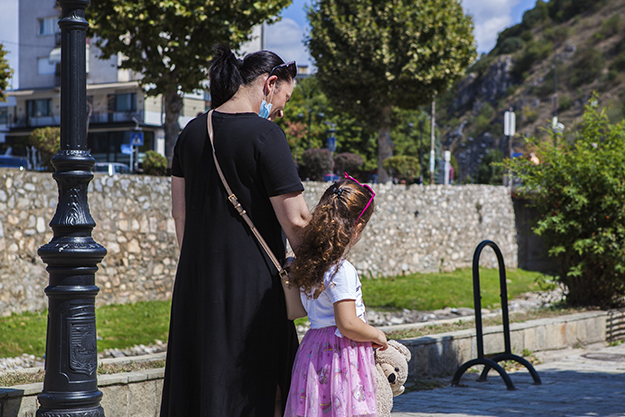
In the absence of a public preschool in Prizren, Shpresa Behluli has for years been forced to find various alternatives for taking care of her 4-year-old daughter while she and her partner are at work. Photo: Naser Fejza.
“They told me that she is enrolled in the preschool, however I don’t know when they’ll start,” she says as she waits for the first public preschool in her city to become operational.
Kosovo remains among the countries with the lowest inclusion of children in preschool education in the region. A report published by KOMF — a coalition of 29 NGOs for child protection — highlights that only 4.8% of children between the ages of 0 and 4 are engaged in preschool education. This figure rises to 90% for those aged 5 to 6, at what is known as pre-primary level. According to KOMF’s data, the overall participation rate of children in preschool and pre-primary education is 18.6%.
“The main reason for such a low participation rate is the affordable preschool institutions’ limited capacity and the general awareness of traditional forms of education within the family,” says the report.
The Ministry of Education and Science (MES) does not have data on the exact number of children aged 0 to 5 years that are not involved in preschool education.
Preschools in numbers
During the 2019/20 school year, 4,164 children aged 0 to 5 were part of public preschool education (2,206 boys and 1,958 girls). That same year, 5,229 children (2,718 boys and 2,511 girls) attended private preschool institutions. At the pre-primary level for children aged 5 to 6, 23,650 children were engaged.
According to MES data for the last four years, an average of 2,700 children aged 4 and 5 have been registered at preschool each year.
The same data shows that for the last four years, about 27,000 children have started in the first grade at school each year.
The budget allocated for preschool education of children aged 0 to 5 years has not undergone a significant increase in recent years. Although it increased from about 14 million euros in 2017 to 17 million euros in 2019, this year it decreased again to about 16 million euros.
In its 2020 report, the European Commission linked the low level of education in Kosovo — reflected repeatedly in poor PISA results — precisely to the low participation of children in preschool education. The report mentions urban-rural division, extreme poverty and the lack of infrastructure as additional factors that contribute to such a situation.
From 2017 to 2020 the annual budget allocated for the preschool education of children aged 0 to 5, has not exceeded 17 million euros.
The lack of institutional financial investment in education is also reflected in Kosovo’s legislation; according to the law, preschool education is not compulsory.
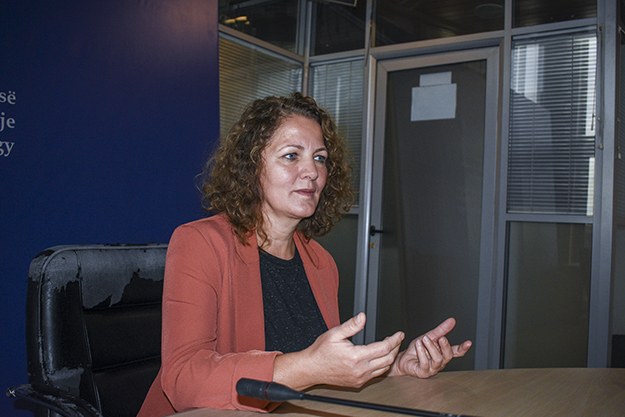
Imrane Ramadani, a preschool education official at the Ministry of Education and Science, says that the frequent change of governments is delaying the Law on Early Childhood Education, which would regulate many aspects of preschool education. Photo: Erion Vllahiu.
Imrane Ramadani, a preschool education official at MES, says that preschool education cannot become compulsory for all children because of the high cost to the state’s budget.
The small number of public preschools best shows that preschool education has not been a priority.
According to the data provided to K2.0 from 32 of Kosovo’s 38 municipalities, throughout the country there are 52 public preschools, 11 community-based preschools, and three public-private preschools. Data published by MES shows that there are also 159 licensed private preschools.
However, education experts say that neither public nor private preschools are monitored on how they work and what kind of teaching programs they use. This means that preschool institutions can implement programs based on their choice, which calls into question the quality of preschool education.
An Administrative Instruction for evaluating the performance of educational institutions that entered into force in 2017 specifies that the evaluation of preschool institutions should be applied after the establishment of relevant performance indicators. However, according to the Education Inspectorate, the indicators have still not been established three years later.
“For this reason, no monitoring or evaluation of preschool education institutions’ performance has been conducted so far,” the MES Inspectorate told K2.0.
Preschool education in Kosovo is organized into two age groups: Nursery for those aged 9 months to 3 years old, and kindergarten for those from aged 3 to 6 years old.
According to a report by KEEN, the 0 to 3 age group has been excluded from almost any investment planning in terms of education.
But education staff can only use the Preschool Education Curriculum, applied since 2006 for children aged 3 to 6 years old; there is no curriculum for the early education of the 0 to 3 years old age group.
In order to address the lack of early childhood education policies, in 2011, MES with the support of the United Nations Children’s Fund (UNICEF), drafted the Early Learning Development Standards for Children Age 0 to 6.
In the “Xixëllonjat” public preschool institution in Prishtina, 120 children are enrolled, 36 of whom are aged 0 to 3. The director of this institution, Mimoza Morina-Veseli, says that because of the lack of curricula, the educators — who use the Early Learning Development Standards as their only source of guidance — continuously struggle to prepare plans for the development of activities with the younger children.
“Within the activities, monthly plans are separately designed for different age groups, covering different topics. There is not a single template used for each activity, but the topics are planned and harmonized depending on the season,” Morina-Veseli says.
According to a report by the Kosovo Education and Employment Network (KEEN), the 0 to 3 age group has been excluded from almost any investment planning in terms of education. Moreover, educators involved in activities with children of this age group often do not have adequate education themselves.
Data published by MES in 2018 shows that of 212 educators who work with the 0 to 3 age group, 206 have finished secondary school, one has finished upper secondary school, and only five have university qualifications.
Imrane Ramadani, preschool official at MES, says that all the educators in the country have attended training on how to implement the Early Learning Development Standards.
However, the number of educators qualified to work with this age group is expected to grow, because since 2014, the University of Prishtina’s Faculty of Education has begun admitting students on a special university program for education in early childhood aged 0 to 3.
The importance of preschool
The low attendance rate in preschool institutions is particularly concerning given the significance that it has for the development of children’s skills, a point emphasized by preschool education experts and various international reports.
UNICEF considers preschool education to be “the foundation of a child’s journey” and says that a “lack of quality education in early childhood limits children’s future, denying them the opportunities to reach their full potential.”
Arlinda Beka, a lecturer at the University of Prishtina’s Faculty of Education, emphasizes the great importance of a quality program, since preschool education at an early age “is the foundation of a child’s personality formation, including the first cognitive concepts, socialization, and emotional and social development.”
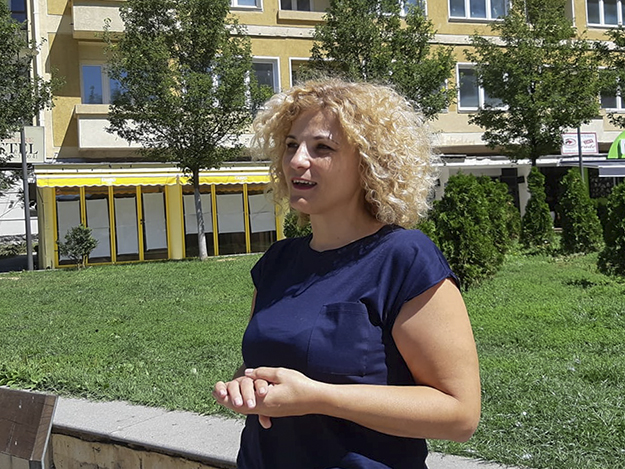
Arlinda Beka, a lecturer at the Faculty of Education, says that preschool education plays a crucial role during early childhood. Photo: Dorentina Kastrati.
“This is because of their development, specifically of the brain that undergoes rapid growth,” she says.
Beka also says that the Ministry of Education should cooperate with the media to promote preschool education through various programs, videos and brochures.
Nafie Sylejmani, a clinical psychologist and the director of the “Prishtina” private international preschool, says that independence from parents is one of the most critical skills that children learn at an early age in preschools.
She explains that developing fine motor skills is also extremely important, especially for children aged 1 to 2. This is why fine materials are used for fingers to help children develop concentration and hand-eye coordination.
“Also, during this period, children learn about animals, get to know new figures and name them,” she says. “We had some 3-year-old children who had never been to a nursery before, and if we compare a 1-year-old and 5-months-old child [who have attended nursery] with those 3-year-olds, there are many differences. Here you can see how important preschool is.”
She adds that different activities, such as cooking, lead to a child’s independence. The separation from parents and socialization with new people is much more difficult for a child who goes straight into the first grade. “It is essential to learn a routine, so that children know when to go to preschool, eat breakfast, sleep, wake up, etc.,” she says.
Shpresa Behluli has noticed the impact on her little daughter of not attending nursery.
She says that she can tell the difference between the older daughter who attended preschool and the younger one who hasn’t. Shpresa adds that when her elder daughter was in nursery 17 years ago — back when there was a public preschool institution in the city — she had no problem enrolling her in first grade because she was already prepared.
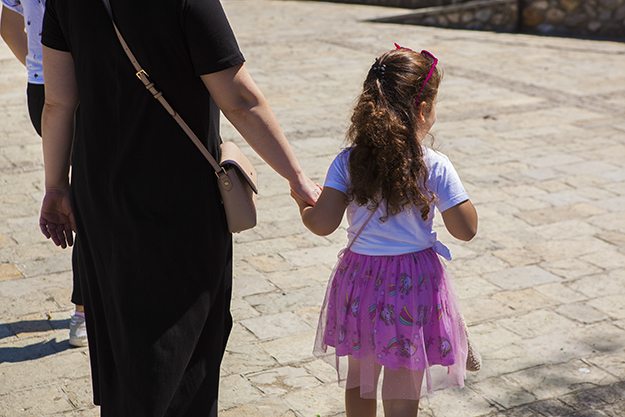
Shpresa Behluli thinks that going to preschool will help her 4-year-old daughter to communicate and socialize with others. Photo: Naser Fejza.
“The little girl does not know many poems, songs, letters,” she says. “I’m trying to teach her, but I can see that she’s not interested; I don’t push her because I can tell that these are not very accessible to her since she does not have contact with other children. I see that she needs company, someone to play with.”
To compensate for the lack of participation in preschool education, education officials and experts suggest that parents should take on the role of preschool teacher.
MES’s Imrane Ramadani says that parents can use the Practical Guide for Parents to support the strengthening of children’s knowledge and skills.
It contains practical examples of activities to do with children, divided into different areas of development, with activity models expected to be conducted by parents in a family environment.
MES has distributed the guide to preschool institutions in Kosovo; nevertheless, it is not online, which would enable parents to access it much more easily.
Discrimination in admissions
Municipalities determine the enrollment price for children in preschool education, so prices vary from place to place. For example, in Junik and Dragash it is free of charge, while in other municipalities, monthly fees vary from 15 euros in Rahovec to 100 euros in Prishtina.
But not all children can enroll in public preschools. The data obtained by K2.0 from 32 municipalities shows that in the 2019/20 school year over 985 children were refused entry due to the public preschools’ limited capacities. In Prishtina alone, in eight preschool institutions, 372 requests for children’s enrollment were refused.
“Based on the information you provided, OIK initiated ex-officio investigations regarding this issue.”
Ombudsperson Institution of Kosovo
Nine municipalities in Kosovo — Malishevë, Fushë Kosova, Istog, Rahovec, Skënderaj, Viti, Vushtrri, Kaçanik and Ferizaj — have decided to deal with limited capacity in their preschool institutions through a discriminatory criterion, stipulating that “Both parents should be in an employment relationship.”
Bashkim Bytyçi, an education official at the Municipality of Ferizaj, says that this is an internal preschool regulation, with the rationale that parents should not worry about childcare while they are at work.
However, this criterion added in these nine municipalities is not part of the Administrative Instruction for Children’s Inclusion in Preschool Institutions that specifies that children who reside in the “municipality, community, premises / neighborhoods of the same location” as the preschool, have the right to apply.
Lawyer Artan Qerkini says that contravening the Administrative Instruction’s criteria in the nine municipalities is illegal and constitutes a violation of children’s rights defined by the United Nations Convention on the Rights of the Child, which is enshrined in Kosovo law through the Constitution. According to the Convention, the state must protect every child from any form of discrimination, including in relation to access to education.
Regarding the establishment of this criterion in nine municipalities, K2.0 requested legal interpretation from the Ombudsperson Institution of Kosovo (OIK).
“Based on the information you provided, on October 15, 2020, OIK initiated ex-officio investigations regarding this issue, and after the investigation OIK will act in accordance with its constitutional and legal mandate,” OIK said in its response.
But the location of preschools and a lack of infrastructure are also excluding children whose parents are employed. This is especially the case in rural areas, as most public preschools are built in cities.
The data that K2.0 received from 32 municipalities show that only 15 preschools are built in villages. Meanwhile, municipalities do not provide transportation for children who live in villages to drop them at the preschools.
Because there are no nurseries in her village or the surrounding villages, Adile Zeqiri cannot send her 3-year-old son to preschool education. She lives with her husband and parents-in-law, in the village of Livoç i Poshtëm, about five kilometers from the city of Gjilan.
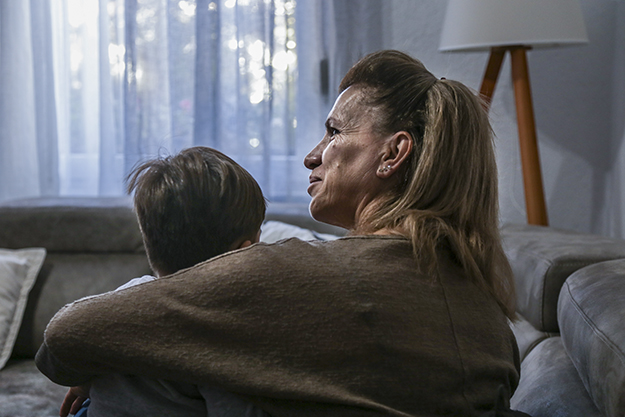
Adile Zeqiri and her partner, like many parents in rural areas, cannot send their children to preschool education because most villages do not have preschools. Photo: Gentian Syla.
Both parents work in Gjilan, Adile at the “Selami Hallaçi” primary school, and her husband in a bank. She says that the working hours make it impossible for them to send their son to preschool.
“Because of the distance, it was a problem to drop them off and pick them up,” she says.
Her three daughters — who are now at the village primary school — were also unable to attend preschool education for the same reason.
When the Zeqiri couple are at work, their 3-year-old’s grandparents take care of him. “We have offered him various games, so that he doesn’t miss his friends, but he still does. He imagines them through different games that he plays,” she says.
As a teacher, she agrees with the necessity of making preschool education compulsory and inclusive.
Excluded and left behind
Izet Gërguri is the father of four children and lives in neighborhood 28 in Fushë Kosova. None of his children have attended a preschool. His eldest son is aged 19, his two daughters are aged 7 and 5, and his youngest son is just one and a half.
Because of financial difficulties, he has not even considered enrolling his children in a preschool, although he says that he understands the importance of preschool education.

The Ideas Partnership offices also function as a free of charge preschool education center for children aged 3 to 6. Photo: Dorentina Kastrati.
Gërguri is the only one in his family who works from time to time. Besides the money he makes from physical work, he also receives a monthly social assistance payment of 120 euros.
“Should I buy food for the children, clothes, shoes, or pay for preschool — what should I spend those 120 euros on first?” Gërguri says. “The children are full of energy … but as a parent, when you can’t afford to educate them — it feels as if you are dead already.”
In Autumn, he manages to earn a bit more money for the work he does than in other seasons, mainly by carrying vegetables in an open-air market. He says that during the winter, he is satisfied if he manages to make 30 euros per week.
He did not know that families who are part of the social assistance scheme are exempt from public preschool fees.
There are no children aged 0 to 4 from these communities enrolled in Fushë Kosova’s public preschool institutions.
The Administrative Instruction for Children’s Inclusion in Preschool Institutions specifies various exemptions from payment, including children from families on social assistance schemes, children with special educational needs, abandoned children without parental care and children of single mothers, children who live with one parent, and children of war veterans. However, according to a report published by KOMF, marginalized groups — although exempted from payment — are often not engaged in preschool because of the limited number of children admitted to public preschool institutions.
For Gërguri, being Ashkali means he is faced with even more difficulties in terms of access to equal opportunities from the state. In the municipality of Fushë Kosova, where he lives, there are over 4,000 residents who belong to the Roma, Ashkali, and Egyptian communities. However, data from the Ministry of Education’s Education Statistics in Kosovo 2019/20 publication shows that there are no children aged 0 to 4 from these communities enrolled in Fushë Kosova’s public preschool institutions.
Considering this situation, The Ideas Partnership organization — as part of the assistance it has provided to the Roma, Ashkali, and Egyptian communities for the past nine years — has opened a free of charge preschool education center for children aged 3 to 6.
The center in Fushë Kosova has about 200 children, while 60 of them participate in some preschool education activities for children aged 3 to 5. One of them is Izet Gërguri’s five-year-old daughter.
Hysni Hasani, the organization’s program coordinator, explains that the activities in this center are held in two shifts, each for two hours per day.
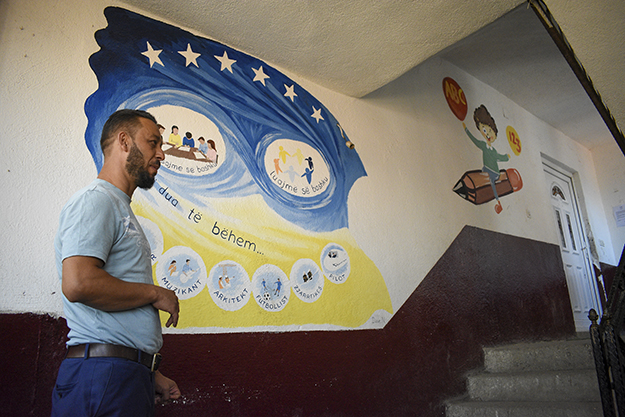
Hysni Hasani is one of The Ideas Partnership’s workers who strive to support access to education for those in the Roma, Ashkali and Egyptian communities. Photo: Dorentina Kastrati.
He says that at the center, children play and draw, but also learn how to adapt, work together and build social relationships in order to have an easier transition to first grade.
The data gathered by K2.0 from 32 Kosovo municipalities for the 2019/20 school year indicates that 403 children from non-majority communities — Bosniaks, Ashkali, Serbs and others (as referred to by MES) — are part of preschool education provided to children 0 to 5 years old in public institutions.
According to this data, in the municipalities of Skënderaj, Ranilug, Kamenicë and Gjilan, there are 356 children from the Serb community who are part of the preschool institutions for children aged 0 to 5. These municipalities have preschool institutions dedicated to this minority community.
But in some Albanian-majority municipalities, the villages populated mainly by the Serb community do not have nurseries and cannot send their children to preschool education.
Among those impacted are Miloš and Danila Denić from the village of Ponesh in the municipality of Gjilan. They have two children: a 4-year-old son and a two and a half-year-old daughter.
“There is no nursery school, but there is a kindergarten,” Miloš says. “However, there is a lack of children’s attendance. In the kindergarten, there is only one child.”
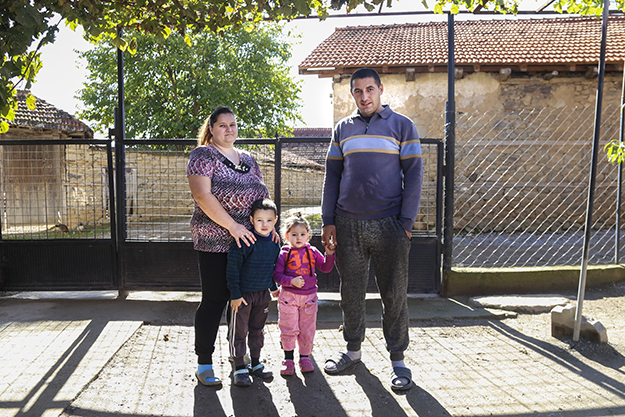
Miloš and Danila Denić’s children do not have access to preschool education in the municipality of Gjilan because of the absence of a nursery in their village. Photo: Gentian Syla.
Danila says that if there were a nursery school in Ponesh, she would register her children there in order to be able to work. Both parents are unemployed and they struggle to make ends meet by the end of the month. They say it would not be a problem for them even if a preschool were to be built in the part of the village where Albanians live.
“It’s not important what kind of preschool it is. We are a multiethnic village and get along well with each other,” Danila says.
According to the 2011 census, Ponesh has 967 residents. Danila says that in this village there are only 15 children who attend classes from the first to the eighth grade.
There are no preschool institutions for children aged 0 to 4 where the Denić parents could send their children in the villages around Ponesh either, with the nearby villages of Shillovë and Koretishtë similarly only offering provision for children aged 5 and 6.
Absent preschools
While some municipalities refuse to admit children to their preschool institutions, in others there is no public preschool operating at all.
The municipalities of Hani i Elezit, Mamuşa, Klokot, Štrpce, Parteš and Novo Brdo do not have any public preschools, and to compound the issue, Ministry of Education data shows there are no private preschools in these municipalities either.
Although children from Dragash’s villages can enroll for free, currently, only 17 children attend.
Data on the municipalities without public preschools does not include five Serb-majority municipalities — North Mitrovica, Leposavić, Zvečan, Zubin Potok and Gračanica. Despite K2.0’s insistence, these municipalities did not provide any information during the conduct of this research.
The Municipality of Hani i Elezit, with about 9,500 inhabitants, began to construct a public preschool in 2017. The Municipal Directorate of Education told K2.0 that the construction of the facility — with a cost of 144,970 euros and a capacity for 60 children — was completed in 2018, but the Municipality filed the request to make the preschool institution functional in September of this year. Menduh Vlashi, the director of education, says that the staff hiring process has already begun and that work is expected to start soon.
In the southern part of Kosovo, in Dragash, there is a community-based preschool. The Municipality built the facility and, in cooperation with UNICEF, opened the preschool. Although children from Dragash’s villages can currently enroll for free, only 17 children attend.
For Vloran Cenaj, the director of education at the Municipality of Dragash, the main reason for the low number of children who attend the preschool is the distance between villages. He says that this municipality has 36 conurbations and does not have the capacity to provide preschools for each of them. Also, many of the villages’ geographical locations, including in the highest part of the Sharr Mountains, makes it even more difficult for children to travel in an area with rocky dirt roads.
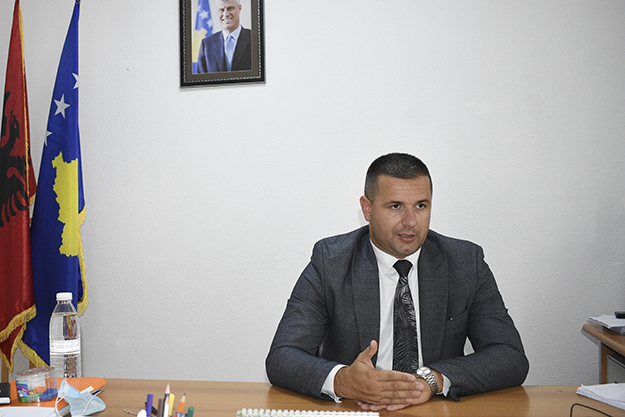
Vloran Cenaj, the Municipality of Dragash’s director of education, says that the preschool built in Dragash’s center does not manage to serve children from the municipality’s villages because of the distance between them and the challenging geographical location.
“It is very difficult for a child to travel from Restelica to Dragash during the winter period,” Cenaj says.
But the demand and need for more preschools is not limited only to rural and mountainous areas. In fact, of the 23 municipalities that replied to K2.0’s question about their preschool provision requirements, none answered that their level of provision adequately meets demand. According to the answers received, in these 23 municipalities alone there is a need for at least 84 more public preschools in order to meet the requirements of children who want to be part of preschool education.
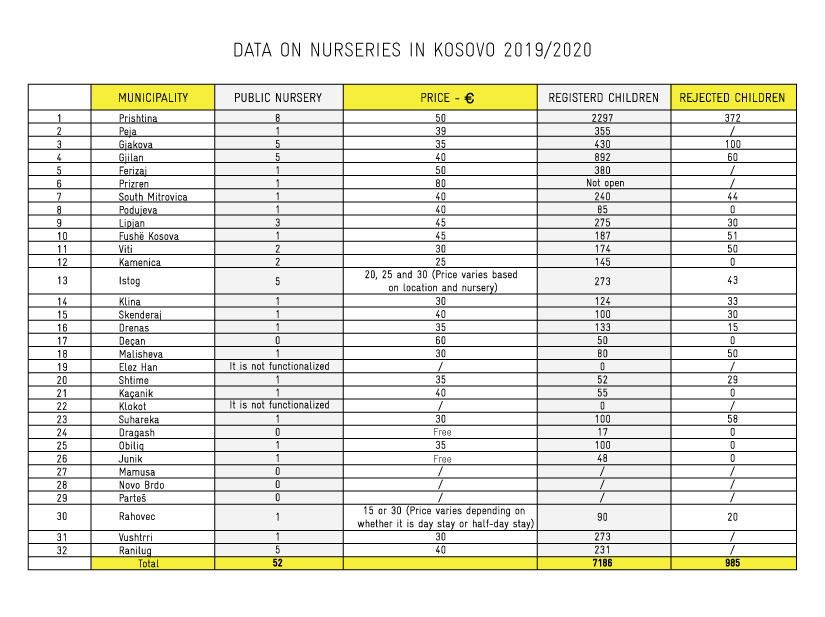
Data collected by K2.0 from the respective municipalities.
For example, within the municipality of Prishtina there are currently eight public and eight community-based institutions operating, attended by approximately 2,500 children — or only 18% of the capital’s young children.
Another illustration of a heavily populated area without adequate preschool provision is the municipality of Ferizaj, which has 100,000 inhabitants but only one public preschool; the municipality says that there is a need for seven more.
Hana Zylfiu-Haziri from the non-profit organization Kosovo Education Center (KEC) says that constructing new preschools is costly and that other alternatives should be found to achieve greater inclusion of children aged 0 to 5 in preschool education.
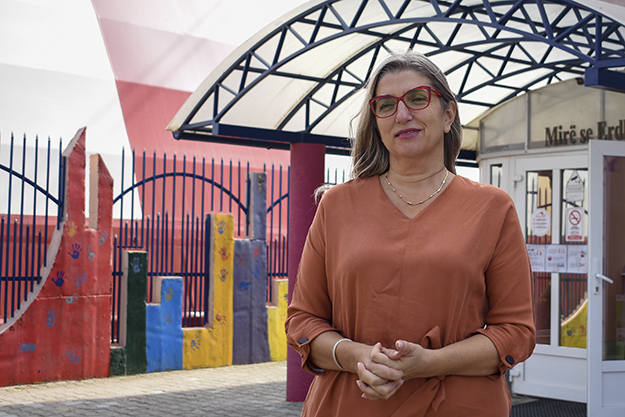
Hana Zylfiu-Haziri from KEC says that the Youth Palace in Prishtina’s center is a suitable space to organize preschool education. Photo: Dorentina Kastrati.
She adds that one possibility is to use existing spaces that are suitable to serve as preschool facilities.
“For example, with a little investment, two or three preschool classes can be arranged in [Prishtina’s] Youth Palace,” she says. “Maybe Prishtina is a slightly busier city, but smaller cities have spaces that can be turned into preschool institutions.”
Imrane Ramadani says that the Ministry of Education has not undertaken any steps regarding these alternatives since it is drafting a Law on Early Childhood Education that will regulate all these issues.
“We have worked hard to finalize the law,” Ramadani says. “But the frequent changes of government has affected the whole process. When the government falls, the working group leaves office and is replaced by a new one.”
Given Kosovo’s recent history of short-lived governments, the benefits that may result from the Law on Early Childhood Education still seem to be far away, as does the political will at the central and municipal levels to provide access to preschool education for every child.
While the early years of education are crucial to building a strong foundation for children’s development — helping them to adapt later in the classroom and to better attainment in life — many of Kosovo’s children are being denied these opportunities right from the start, along with the right to equal access and participation in society.K
Feature image: Naser Fejza.
This publication is part of the third cycle of the Human Rights Journalism Fellowship Program, supported by the European Union Office in Kosovo. The program is co-supported by the National Endowment for Democracy. This program is being implemented by Kosovo 2.0, in partnership with Kosovar Center for Gender Studies (KCGS), and Center for Equality and Liberty (CEL). Its contents are the sole responsibility of Kosovo 2.0 and do not necessarily reflect the views of the donors.


